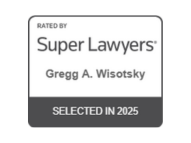SCOTUS Makes a Decision to Help Lighten Crack Cocaine Sentencing
Criminal offenses that involved crack cocaine have long been subject to stigmatization. This came with real consequences for defendants, who were often dealt sentences that were vastly disproportionate to offenses related to powder cocaine. Now that the Supreme Court has made a decision that opens up a new route to leveling the playing field, there’s fresh hope for victims of the harsh sentencing practices that countless defendants in crack offense cases have endured.
There’s a misconceived notion that cocaine’s addictive quality is amplified when it’s in the form of crack. This has been one of the major drivers of the dramatic inconsistency in sentencing between powder and crack cocaine offenses.
Another false pretense is that crack users are more likely to use violence, but there are no facts to back up these claims. Although crack and powder are in two distinct forms, it’s still the same drug being used. This means it comes with the same effects and the same types of users.
Because of the stigmas around users of crack cocaine, the result was more people being incarcerated – and for longer terms. After a recent Supreme Court decision, there is a new pathway to end that trend and pursue fairer sentencing practices.
Broadening the Scope of Consideration
The ruling that was issued in June 2022 changed the game for criminal offenses related to crack cocaine. As a result of this SCOTUS decision, a key limitation formerly placed on judges has been removed.
Before this ruling, a judge was only allowed to consider the circumstances as they relate to the offense itself. This meant they could only examine the time and place of the incident and not give consideration to any external factors. The Supreme Court held that it is the duty of judges to think about how the laws may have fluctuated in the intervening time period since the individual was sentenced.
The Case
Carlos Concepcion had served around two years of his prison sentence which was set to last a total of 19 years. His crime was the possession of more than 5 grams of crack cocaine with the intent to distribute the drug.
Under a statute called the First Step Act, there was a high likelihood of Concepcion having a reduced sentence. But it was the opinion of the government that he should be seen as a career offender by the court because of previous convictions he had in state court. His appeal to the Supreme Court led to a reversal of the First Circuit’s affirmation of Concepcion’s sentencing.
People Change – And Laws Do Too
One of the main ideas behind the decision is the idea that laws are not static, and people aren’t either. Laws are no more set in stone than people are, and this ruling reflects the belief that the criminal legal system should reflect this change over time. Proponents of this ruling posit that people are capable of change and laws are constantly in flux, so a judge’s purview ought to consider the full scope of the situation.
In her argument for the majority, Justice Sonia Sotomayor discussed the precedent of federal courts carefully scrutinizing all information during an initial hearing. This is a responsibility that should also carry forward into any proceedings that might affect the initial sentencing.
This concept of keeping these updates to a person’s situation in mind is by no means unique to the First Step Act. It’s highly common for a federal court to look at signs of improvement through rehabilitation or other means and take that as an indicator that the offender has earned a shorter sentence – or vice versa if the person has been exhibiting violence and breaking the rules while in prison.
One Step at a Time
 Four years prior to this groundbreaking ruling, Congress passed the First Step Act of 2018 to correct the vast disparity in crack cocaine sentencing. The intention behind this move was to retroactively correct the damage done by the disproportionately long sentences given to crack offenders.
Four years prior to this groundbreaking ruling, Congress passed the First Step Act of 2018 to correct the vast disparity in crack cocaine sentencing. The intention behind this move was to retroactively correct the damage done by the disproportionately long sentences given to crack offenders.
The First Step Act has led to numerous cases. It was also utilized as a way of allowing Congress to apply the Fair Sentencing Act to previous rulings through retroactive force. This statute reduced the minimum penalties for a number of crack-related federal crimes.
Judging the Whole Person
This deeper examination of the changing laws only covers part of what this decision entails. In addition, judges are now also expected to consider the steps that a defendant has taken to seek rehabilitation, giving them an opportunity to make a case for themselves to prove in court that they genuinely have reformed.
With the broader lens through which judges are now examining these cases, new details may be brought into consideration. This has the potential to provide defendants and a Morristown criminal defense lawyer with the opportunity they need to present their case in a new light. Still, this Supreme Court decision doesn’t give every crack offender an automatic guarantee that their sentence will be reduced – but it may be a new cause for hope.
A Split Decision
The June 2022 SCOTUS decision was a 5-4 ruling. On the opposing end of this decision were:
- Chief Justice John Roberts
- Justice Brett Kavanaugh
- Justice Samuel Alito
- Justice Amy Coney Barrett
These Supreme Court Justices all believe that the outcome was an anomaly, with Barrett even referring to it as a “haphazard windfall” for any crack offender who received their sentence prior to August 3, 2010. Their concern is of criminal offenders being let off the hook at random with unfairly lightened sentences and a clear methodology.
Among the arguments made by these dissenting justices is that it goes against the spirit of what Congress truly enacted the First Step Act for. Kavanaugh contended in a written statement that the First Step Act was meant to target the sentencing range for crack cocaine cases rather than what he sees as disorganized sentencing among the lower courts.
Changing the Ratio for Fairer Sentences
With the 100-to-1 rule, an offender has to be caught with 100 times the quantity of cocaine in powder form to prompt a crack-level minimum prison sentence. This was in response to the Nixon administration’s domestic policy that was geared toward ostracizing Black communities as well as those in the hippie cultural movement.
The Fair Sentencing Act of 2010 brought the 100-to-1 ratio down to 18-to-1. This change also came with an increase in statutory fines and the elimination of a mandatory minimum sentence for simple possession of crack.
Who Uses the Most Crack Cocaine?
White people consume more cocaine, including both powder and crack. But it’s in cases involving Black people that the sentencing inequality is at its worst. Congress continues to deliberate over ways to further reduce the sentencing imbalances that still exist and pose serious issues in countless communities.
For a Morristown criminal defense lawyer you can count on, call Gregg Wisotsky today at (973) 898-0161. Feel free to visit us at any of our new Jersey offices. You can also send us a message by filling out and submitting our contact form.



 The above-mentioned Harris County study found that offenders who participated in diversion programs had improvements in employment outcomes by 53% in the 10 years following their participation. In stark contrast to this is a study showing that each additional year of incarceration reduces an offender’s odds of employment by 3.6%.
The above-mentioned Harris County study found that offenders who participated in diversion programs had improvements in employment outcomes by 53% in the 10 years following their participation. In stark contrast to this is a study showing that each additional year of incarceration reduces an offender’s odds of employment by 3.6%. When a plea bargain is offered, the prosecution is required to follow specific sentencing provisions set by the New Jersey Code of Criminal Justice. Any offers that the prosecution may extend to the defendant are based on the range of sentence possibilities for the criminal charges in question. Plea bargain offers usually align with the midpoint of the range of sentencing possibilities.
When a plea bargain is offered, the prosecution is required to follow specific sentencing provisions set by the New Jersey Code of Criminal Justice. Any offers that the prosecution may extend to the defendant are based on the range of sentence possibilities for the criminal charges in question. Plea bargain offers usually align with the midpoint of the range of sentencing possibilities.








